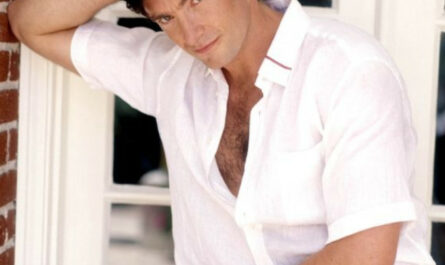Hugh Jackman, the acclaimed actor, singer, and producer, is a household name in Hollywood known for his captivating performances and charismatic screen presence. While many fans may be familiar with his iconic roles as Wolverine in the “X-Men” franchise and Jean Valjean in “Les Misérables,” few may know about Jackman’s humble beginnings and his debut in the world of acting. Surprisingly, Jackman’s journey began long before his rise to fame, with his first foray into acting dating back to his childhood. In this article, we’ll unveil the hidden gems of Hugh Jackman’s debut role, exploring surprising facts about his early start in the spotlight and his transition to professional acting on both stage and screen.
Early Start in “Camelot”:
Hugh Jackman’s acting journey began at a remarkably young age, with his first role as King Arthur in a production of “Camelot” when he was just five years old. This early introduction to the world of theater ignited Jackman’s passion for acting and set him on a path towards a successful career in the performing arts. Despite his tender age, Jackman’s talent and stage presence were evident even at this early stage, foreshadowing the remarkable career that lay ahead of him. Britannica emphasizes the significance of Jackman’s early acting start, highlighting the formative influence of his childhood experiences on his future success in the industry.
Stage Debut in “Beauty and the Beast”:
Professionally, Hugh Jackman’s first major role on stage came in 1995 when he portrayed Gaston in the Australian production of Disney’s “Beauty and the Beast.” This pivotal role marked Jackman’s official debut in the world of professional theater, showcasing his remarkable talent and versatility as a performer. As Gaston, Jackman captivated audiences with his commanding stage presence, charismatic demeanor, and powerful vocals, earning rave reviews and establishing himself as a rising star in the Australian theater scene.
Screen Debut in “Correlli”:
While Hugh Jackman’s stage debut in “Beauty and the Beast” solidified his status as a rising star in the world of theater, his transition to professional acting on screen came with his first major TV role in the Australian ABC series “Correlli” in 1995. In the series, Jackman portrayed the character Kevin Chambers, a troubled inmate at a women’s prison, showcasing his dramatic range and acting prowess in a gritty and compelling role. Despite being relatively new to the world of screen acting, Jackman’s performance in “Correlli” garnered critical acclaim and served as a springboard for his future success in film and television.
Legacy of Talent and Versatility:
Hugh Jackman’s debut role in “Camelot” may have been a humble beginning, but it laid the foundation for a remarkable career marked by talent, versatility, and dedication to his craft. From his early days on the stage in “Beauty and the Beast” to his breakout roles in Hollywood blockbusters, Jackman has captivated audiences with his magnetic screen presence, undeniable charisma, and exceptional acting ability. Whether he’s wielding adamantium claws as Wolverine or belting out show-stopping tunes as Jean Valjean, Jackman’s performances leave an indelible impression, solidifying his legacy as one of the most talented and versatile actors of his generation.
Conclusion:
Hugh Jackman’s debut role may have been in a production of “Camelot” at the age of five, but it was just the beginning of a remarkable journey that would see him rise to become one of the most beloved and respected actors in Hollywood. From his early start in theater to his success on both stage and screen, Jackman’s career is a testament to the transformative power of passion, perseverance, and talent. As fans continue to celebrate his remarkable achievements and eagerly anticipate his future projects, one thing remains clear – Hugh Jackman’s hidden gems shine brightly, illuminating the world with their brilliance and leaving an enduring legacy in the annals of entertainment history.



